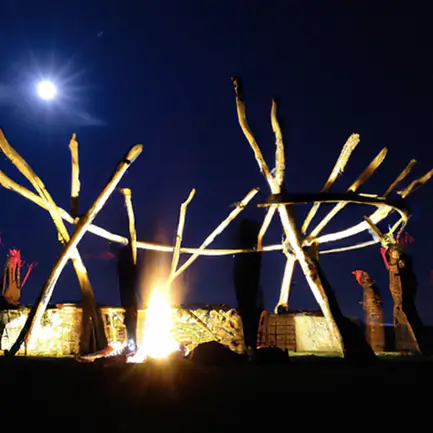We know that humans live relatively long lives, and we certainly know that we spend a larger proportion of those lives as children than other species. The question remains: how did we manage to extend this critical period of our growth? When and where did our ancestors start to stretch out the limits of physiology and build that long childhood? And where can we find evidence of this evolutionary process?
The very surprising answer is: in the mouths of babes—specifically, their teeth. But to understand how the timing of teeth tells us the story of, well, us, we need to first put teeth in context: as important milestones on the path to growth.
Different species grow at different rates. How fast you grow is determined by a complicated set of interlocking mechanisms that factor in everything from the mass of the animal to the stability of their environment and has led to the development of a branch of evolutionary biological theory that attempts to disentangle the factors that propel a species from one developmental milestone to the next: ‘life history.’ Understanding a species’ life history has major implications for biology: comparing the rate of growth between two species, for instance, gives us insight into different evolutionary strategies. For Homo sapiens, who have some of the slowest growth on the planet, looking at life history becomes a critical way to address why our species has moved our milestones so far from those of our nearest relatives.
Teeth are one of the foremost tools in understanding how animals grow because they arrive in the mouth—erupt—at a very predictable time. This regular schedule reflects the critical importance of having the right teeth at the right time. Animals need different sizes and numbers of teeth at different ages. If you think about trying to fit an entire adult set of teeth into the mouth of a baby, you will rapidly understand why it is that humans come with two sets. Of course, having multiple sets is not the only option—some animals have endless sets, like sharks, and some have sets with some teeth that grow continuously, like hamsters. But for primates like us, there are two sets to worry about: our ‘milk’ or ‘baby’ teeth, and our adult, permanent set. The schedule of which teeth emerge when gives us a clear evolutionary signal of which teeth are needed when, and all teeth have very specific jobs to do.
From about five months in utero, human teeth start to develop. We are born with some of our baby teeth already partially formed, but still inside our jaws. The process of ‘teething,’ which parents, in particular, are acutely aware of, is actually a long and drawn-out period over the first few years of life as the deciduous—the formal name for baby teeth, which after all shed just like the leaves of deciduous trees—teeth erupt out of the jaw and into the mouth. First, the incisors in the front, which have the job of nibbling and biting, erupt around 4.5 months; then the lateral incisors to the sides of them around 7.5 months, then the first big bumpy chewing teeth, molars, around 10.5 months followed by the ripping and tearing canine teeth until the last big baby teeth, the chunky second molars, emerge at about 1.5–2.5 years old. That’s it for teeth until about 5 years old, when the very first permanent tooth comes into the mouth: the first adult molar, or, as it is known by biologists: M1.
Molars have been seen as key to explaining the timing of our life histories. Evolutionary biologists looking to explain patterns of growth and development in primates have observed that the timing of the eruption of M1 is linked very well with the end of dependence on mother’s milk, or the end of infancy. The eruption of M2 has been linked with a stage of childhood usually referred to as the juvenile period, and the ability to forage independently in primates like chimpanzees. Finally, the eruption of the third of our big chewing teeth (M3—the wisdom tooth in humans) has been associated with reaching adulthood, the end of growth, and possibly the start of reproduction.
Careful reconstruction of fossil teeth has shown that earlier probable ancestors, like Australopithecus africanus and Homo erectus, erupted their teeth into their mouths much faster than we do today. The timing of the eruption of molars particularly probably was very similar to that of our common ancestor with today’s chimpanzees, and modern-day chimpanzees erupt their first permanent molar (M1) at 2 to 4 years old, M2 at around 6 to 8 years, and finish the last (M3) at 12 years, a few years before they are ready to behave as full adults. Humans, by contrast, have molars that appear around age 5, 10–11, and about 18 years of age.
However, even though we have many similarities with our nearest primate relatives, we have somehow become untethered from the biological milestones that signal different life history events. The eruption of our teeth is not timed quite right for when we wean and move our babies onto solid foods. Even in societies where the pressure to end breastfeeding early does not exist, humans simply do not spend as long as infants on the breast as a primate our size should; we are done before M1 is ready. A large-scale study of forager children around the world found that by 10 years old when M2 isn’t quite erupted, children were still only half as competent at getting food as they would be at 20. Meanwhile, age at eruption at M3 is highly variable and not as clearly linked to reproductive age, with things like adolescent growth spurts confusing the picture.
This suggests that perhaps milestones like the timing of teeth are not all that matters in calculating how we got our unique human life histories. Perhaps our drive to grow long and slow means we have untethered our teeth from the behavioral milestones that our closest relatives still display, or perhaps we have just drawn out the time between these milestones in such a way that it is no longer clear how they fit in the primate pattern.
This does not mean that the timing of our teeth doesn’t matter, however. The factors that push our species out to the extreme ends of life-history schedules are not, of course, ours alone. Our costly investment in big brains has long been theorized to be behind our extensive lifespans, but the same links between long lives and big brains have been seen in many other mammals. As a matter of fact, if you map the size of the brain against the timing of teeth, you get a very neat line right across all of the primates, and we fit that line perfectly.
Our first molars emerge at exactly the right time for a primate trying to build an enormous brain the size of ours. If you consider the function of teeth, it makes sense that the emergence of molars would coincide with important points for growth in our species—points at which we need to be able to take in and process more calories, using our molar teeth. New research shows that learning complex skills such as the foraging skills that humans need to exploit their ecological niche may also be an important part of what humans do with their long childhoods—getting the right mix of nutrients for an energy-burning brain is a complicated business, requiring group communication, the invention of tools, and complex mental processes. Perhaps our teeth are right on track, after all.


